Knock on Wood
Wood on C. F. Martin Guitars
It appears that guitars made by C.F. Martin in the 1830's when first coming to New York may have been made with tops of Alpine Spruce from Europe.
Early Martin Stauffer Style Guitar
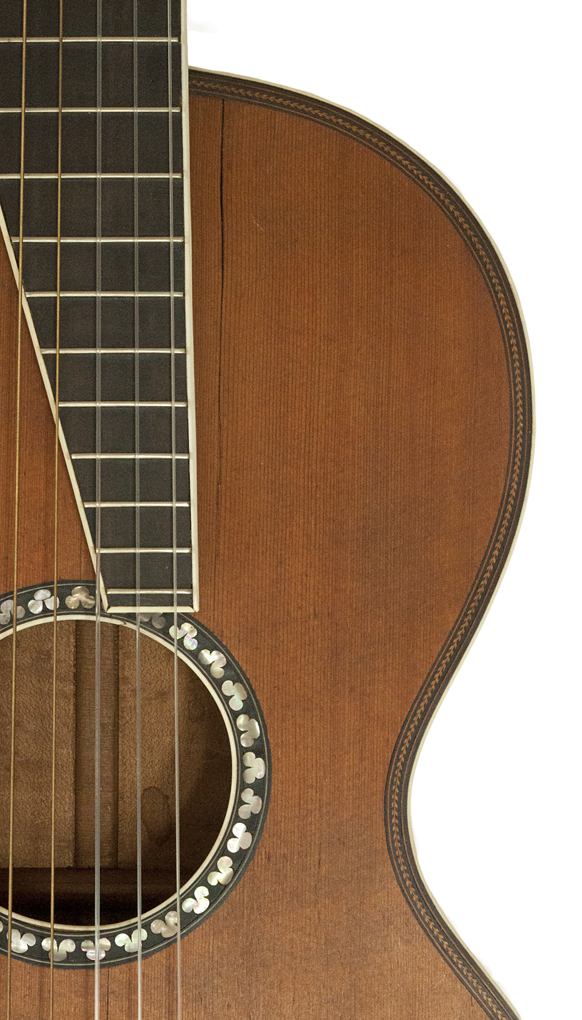
1837 Martin Hudson Street Guitar
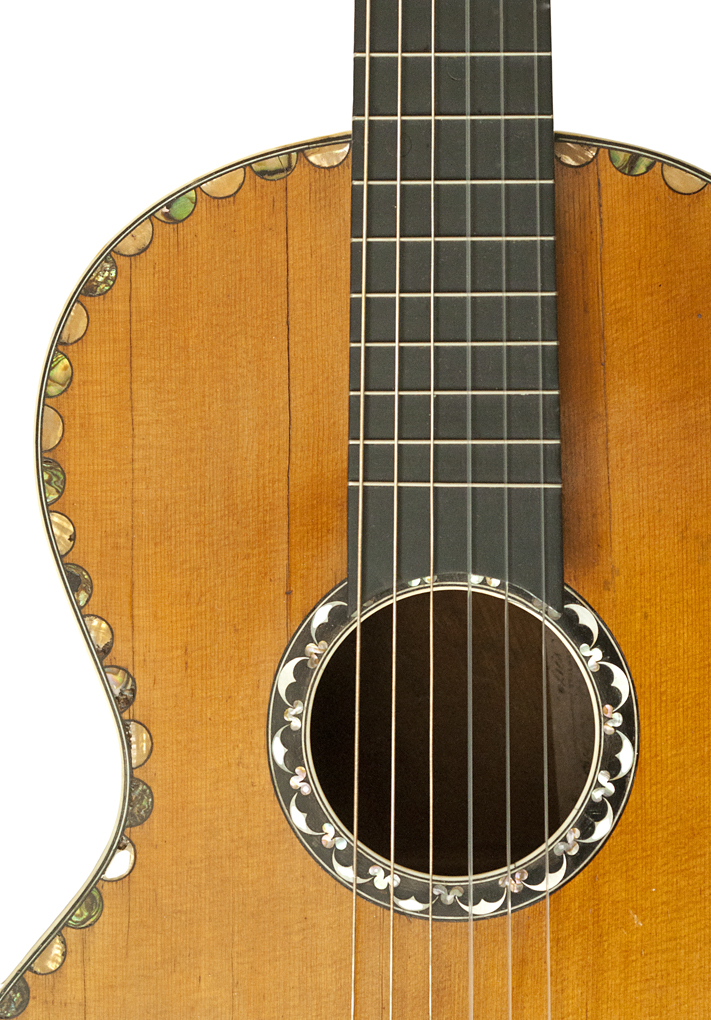
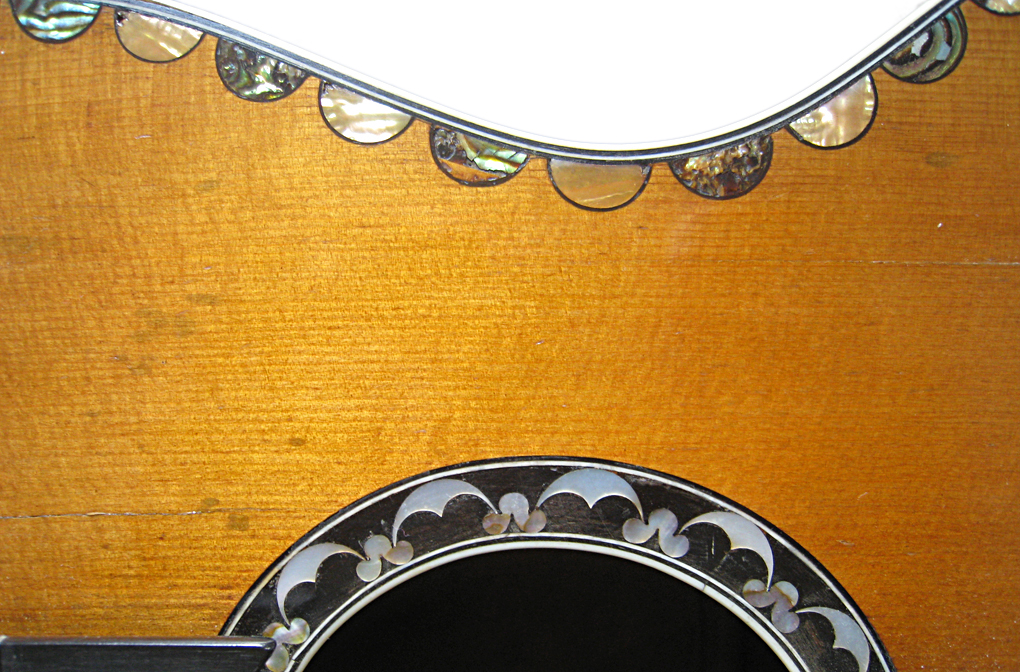
In most of the years before World War II, Martin used wood for their tops often called "Adirondack Spruce" as it was generally sourced from the Adirondack region of the Eastern US, mostly from suppliers in Vermont, but more properly named "red spruce".
The finish can affect the appearance of early Martin guitars, as Martin often used shellacs which added an orange tone.
1840's Alternate X Brace Spanish Style Martin
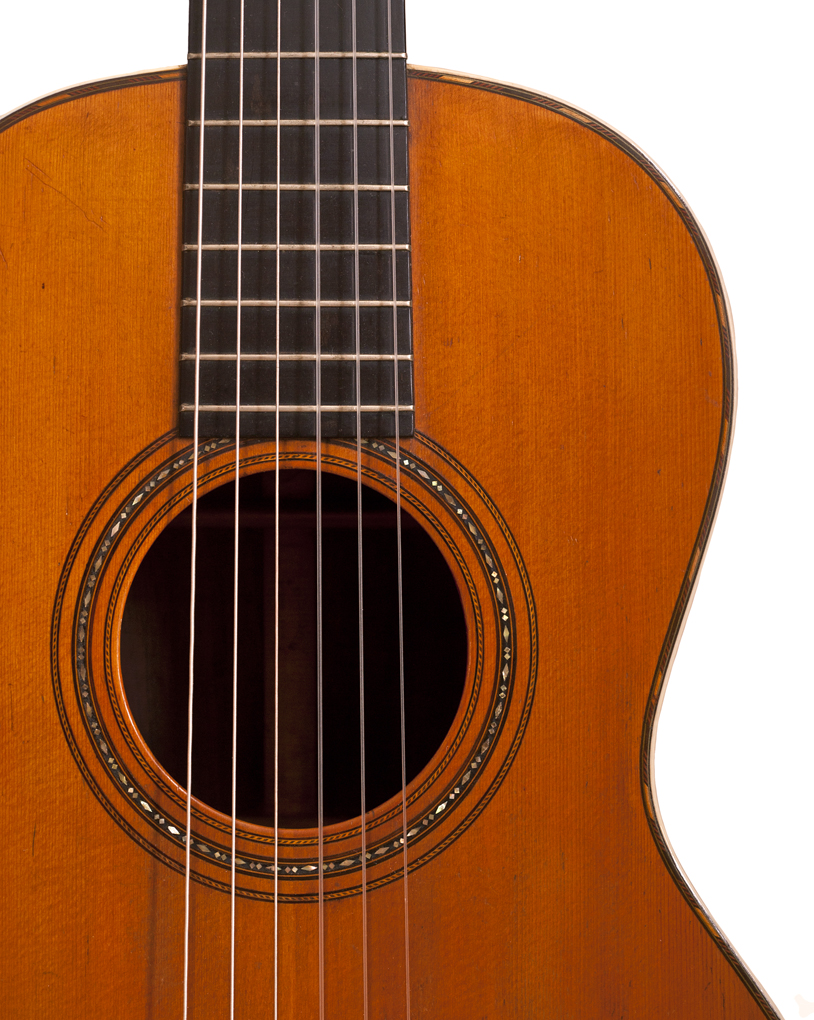
Without the orange tone sometimes imparted by shellac, the top wood on early Martins is generally pale and even in tone, in addition to having a uniform even, straight grain.
Martin 1840's Spanish Guitar
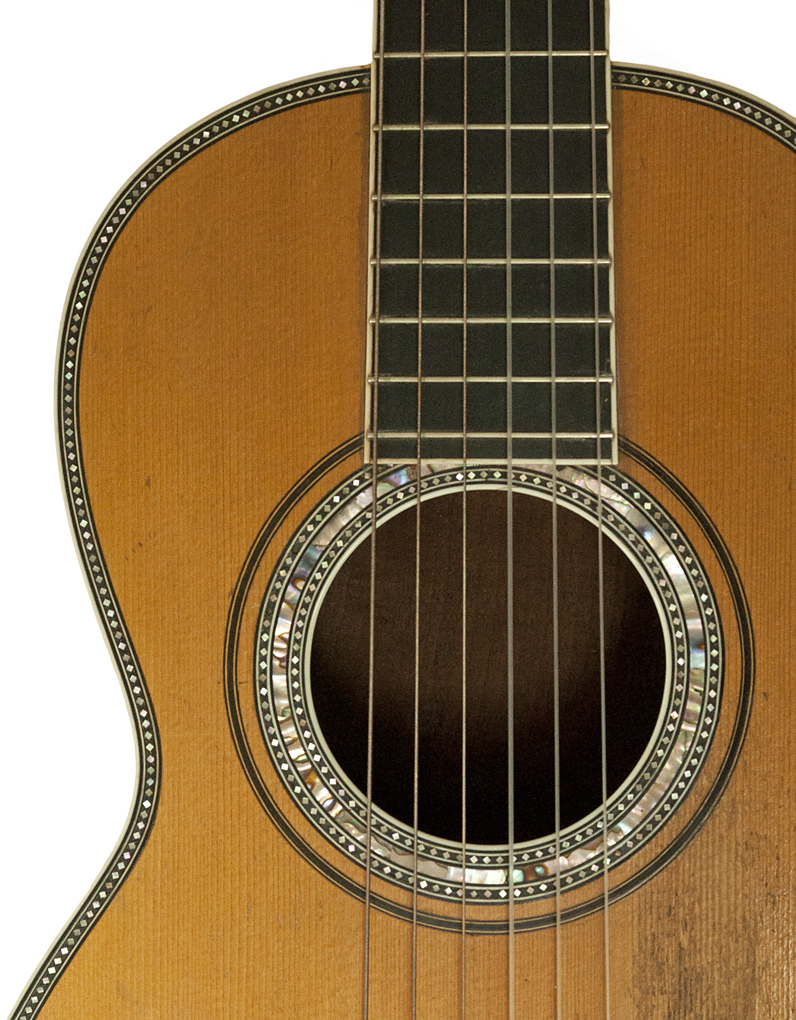
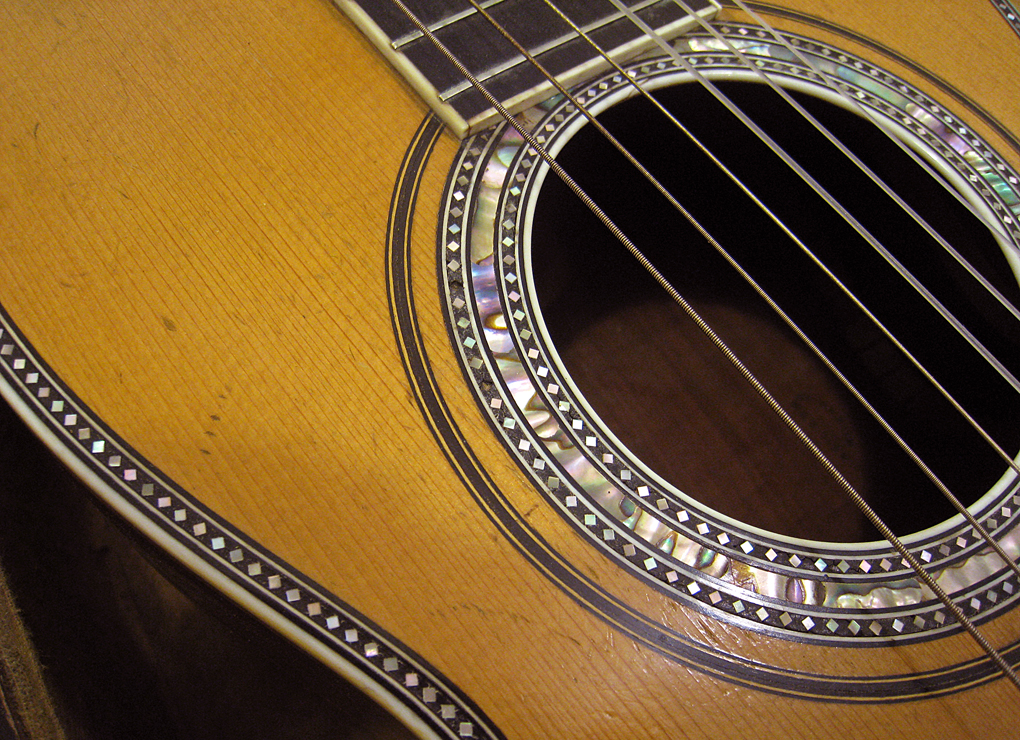
1850's Martin Ivory Fingerboard Stauffer Headstock Guitar
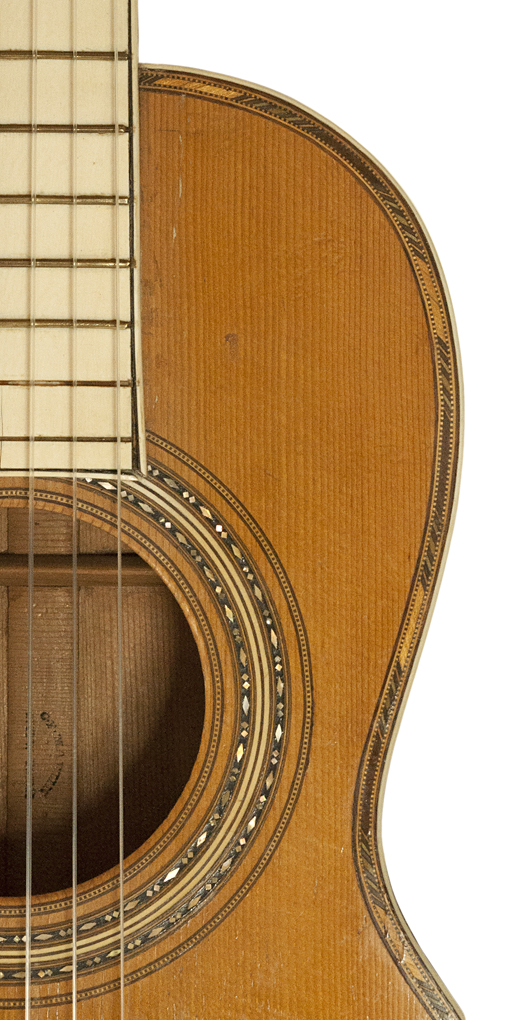

Martin Style 5 Mandolin, 1899
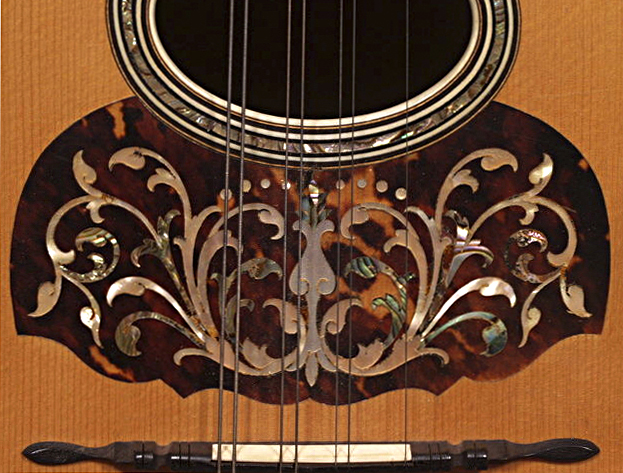
The top wood seen on the highest grade Martins is extremely pale and even, leading one to think that Martin might have used European spruce for their best pearl inlaid guitars.
The question is confused by the fact that German spruce has a similar pace appearance, while "German Spruce" is in fact a variety of spruce grown in America, and it's generally understood that German spruce was used for pearl inlaid Martins after their revival in the 1960's.
Martin Style 42
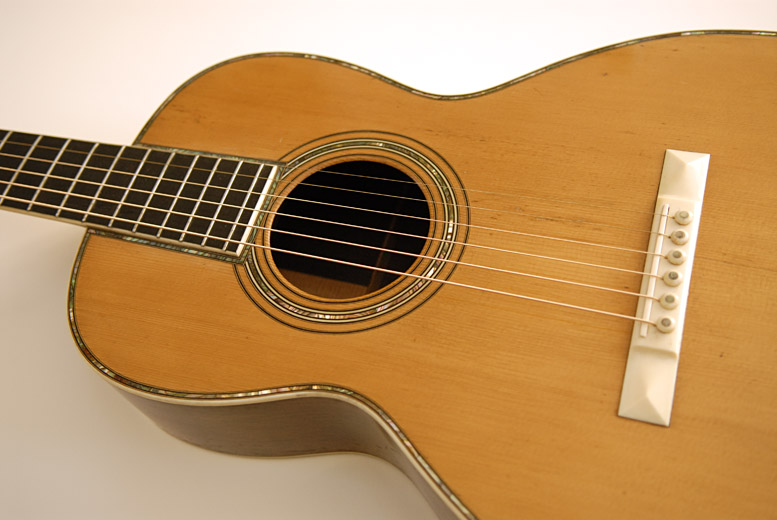
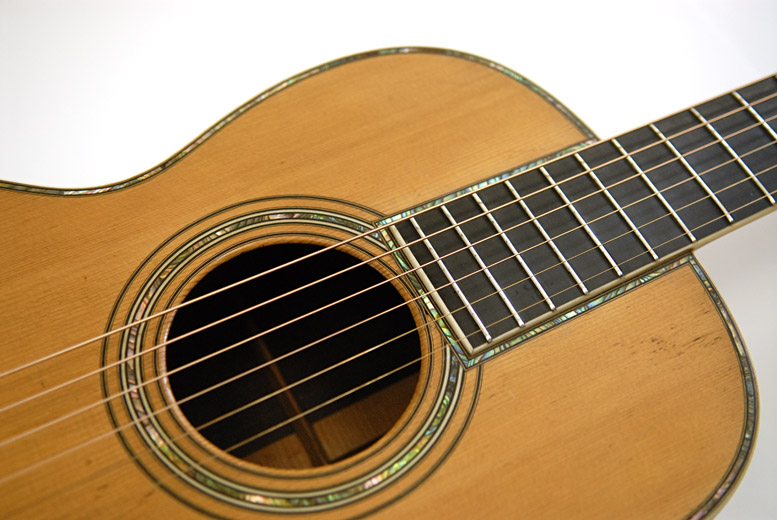
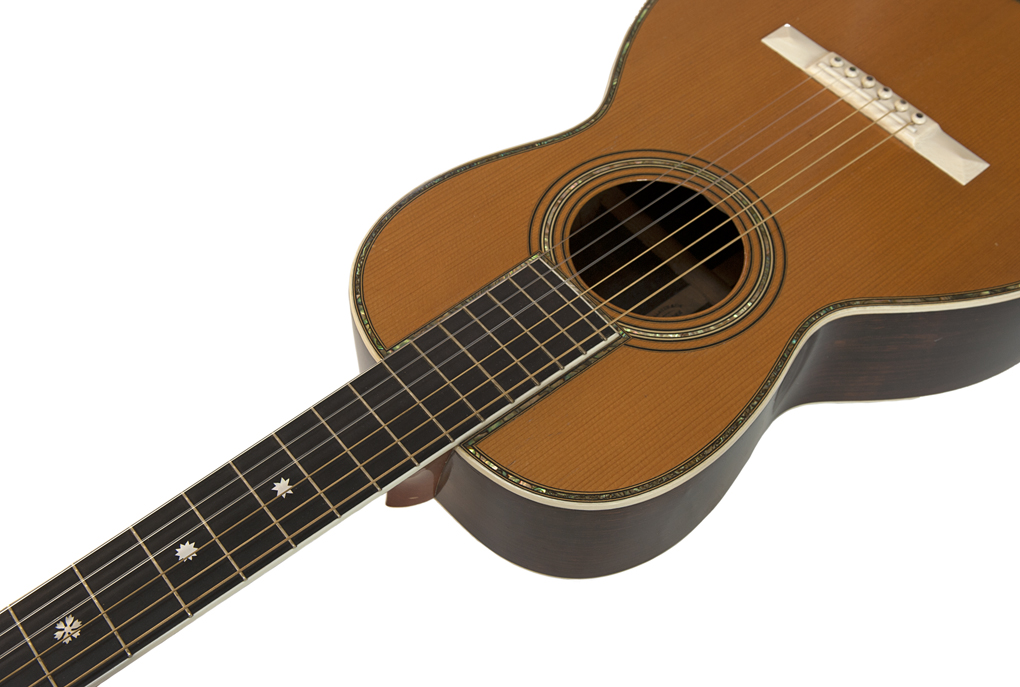
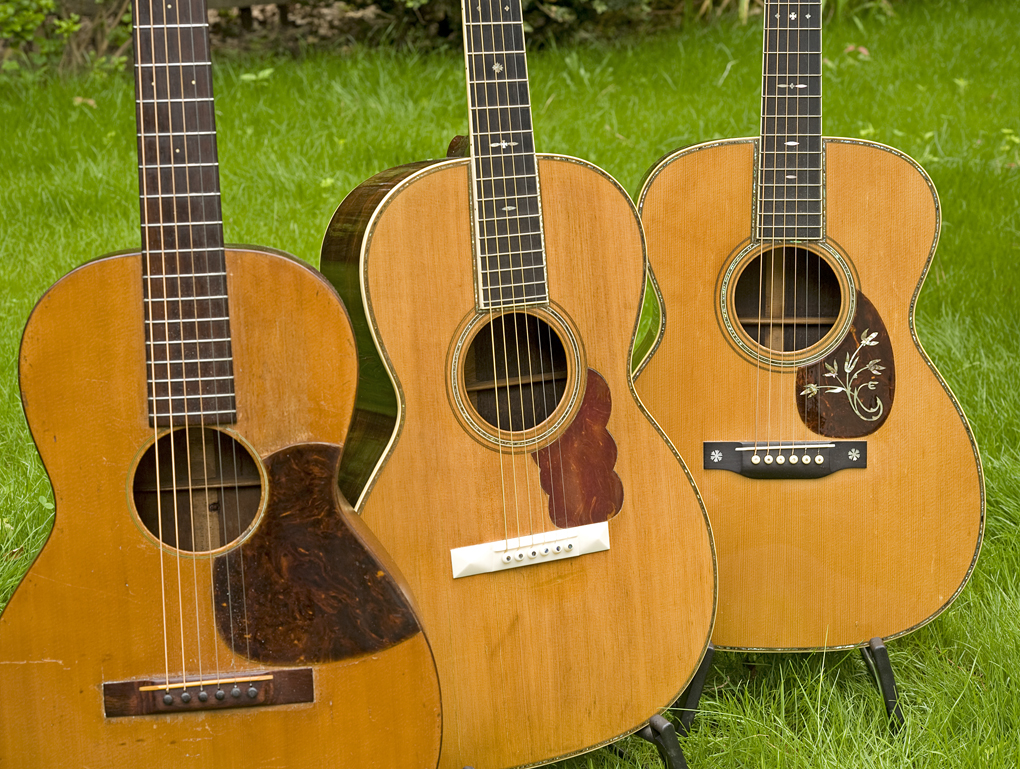
C. F. Martin Style 5 mandolin from 1899

This 000-42 was special ordered by the Ditson Company in 1918 with a cloud shaped pickguard inlaid into the spruce top.
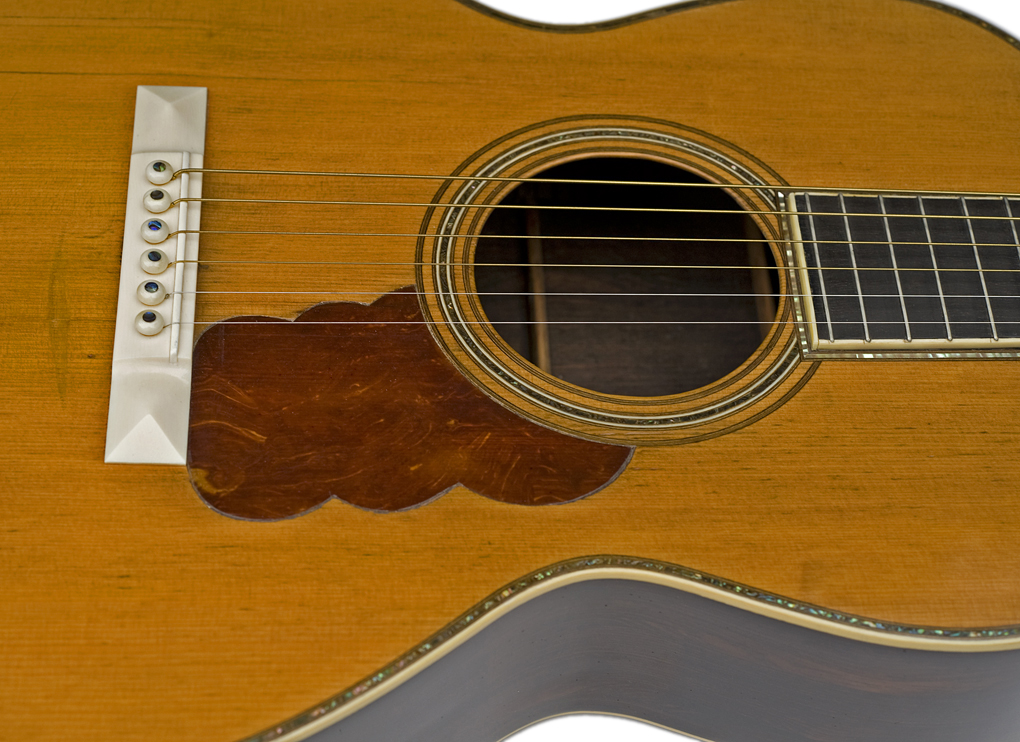
In 1919 Martin briefly broke with tradition and used Sitka Spruce, known at the time as "Airplane Spruce", for the tops of their guitars.
Sitka can often be distinguished by darker, reddish grain lines and prominent resin canals which cross the grain of the spruce.
1919 Martin 0-45

1930 OM-28
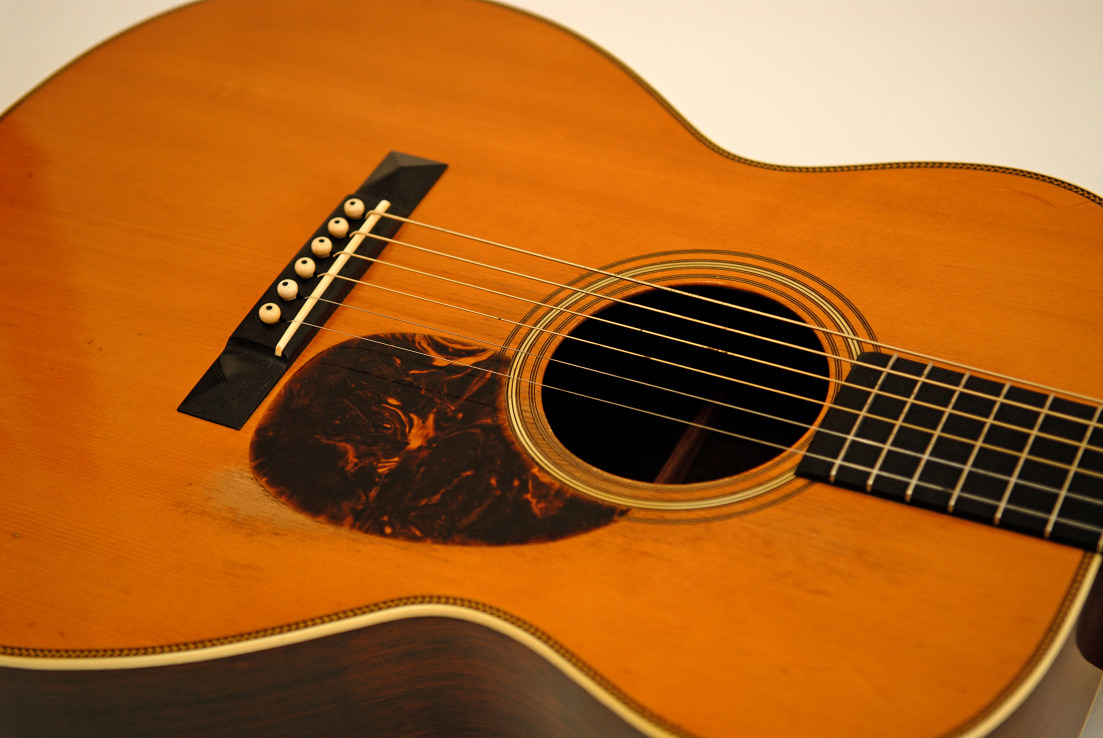
1930 Martin 0-18T

The 1930 Martin OM-28 and OM-45 DeLuxe
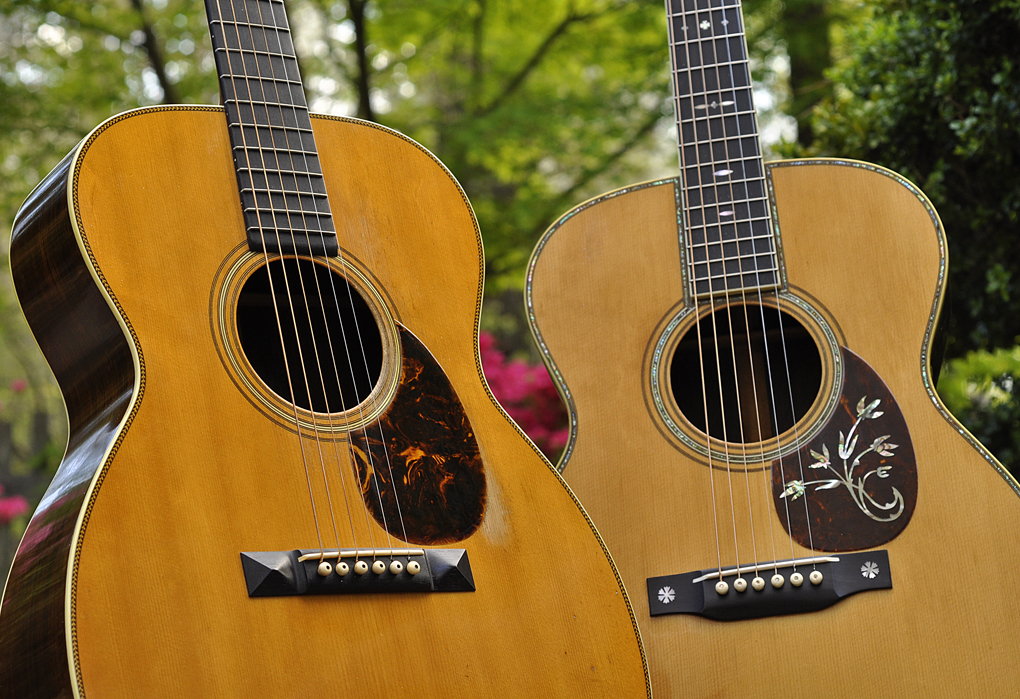
Martin used the finest material on their pearl inlaid guitars, and used the highest grade woods available for the DeLuxe.
1930 Martin OM-45 DeLuxe

1931 0-18T
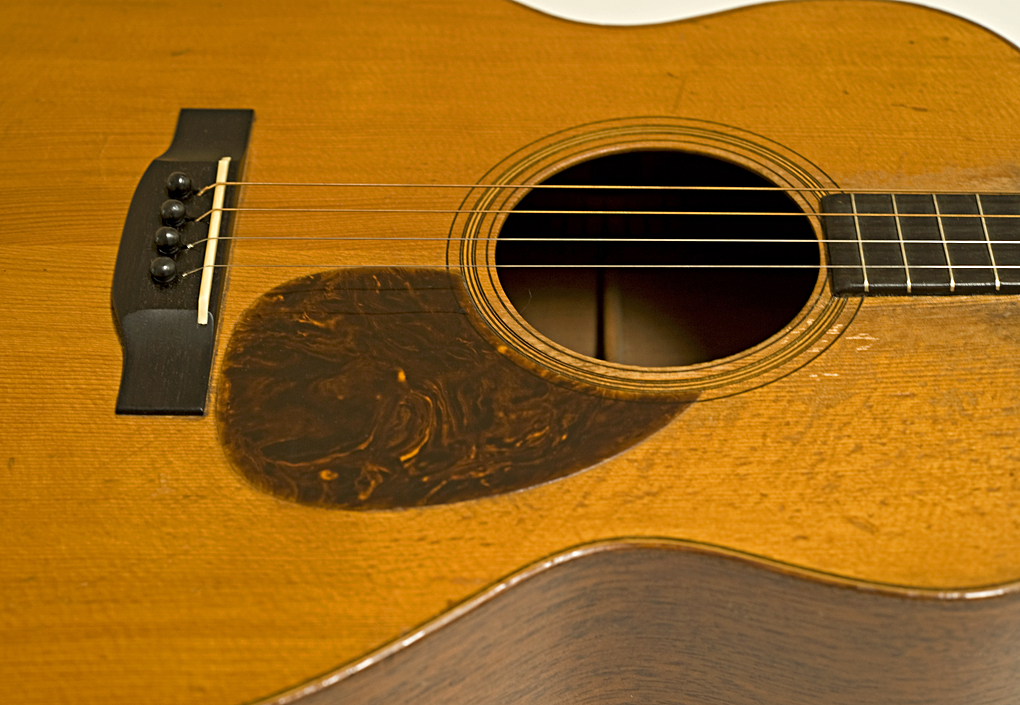
1930 Montgomery Wards 0-17S
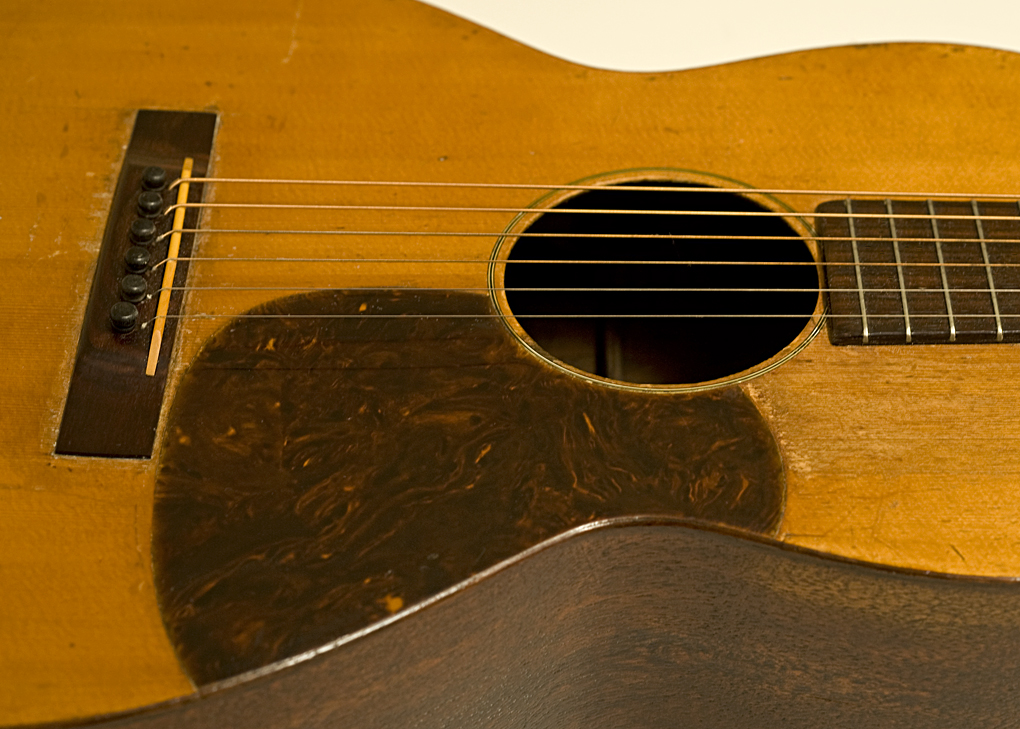
1933 OM-18
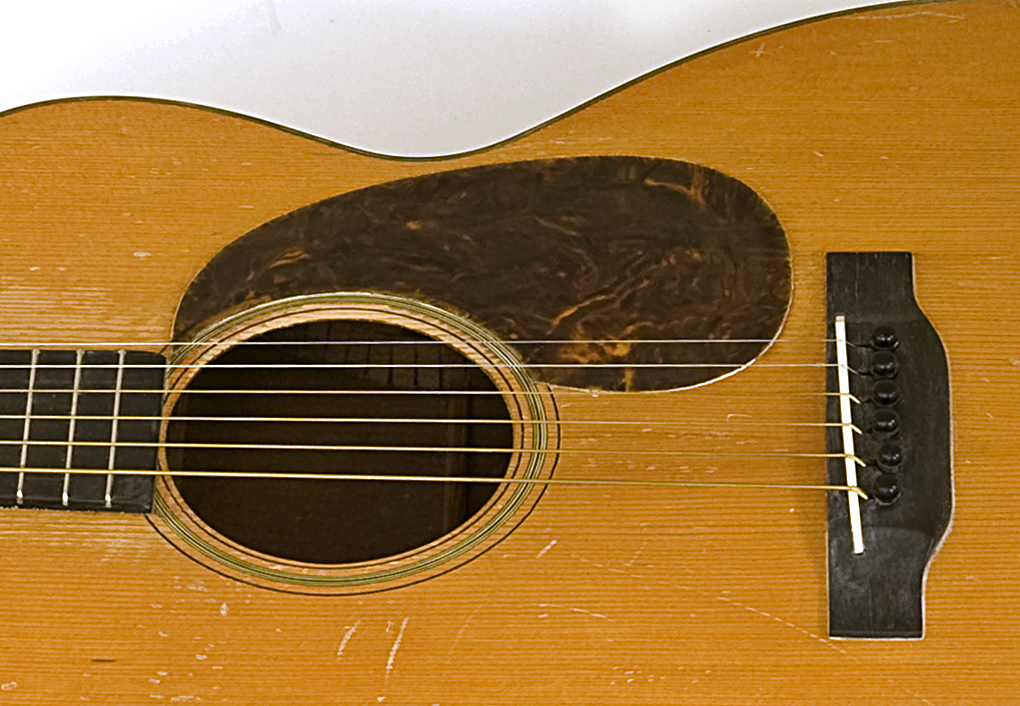
1937 Martin 00-18
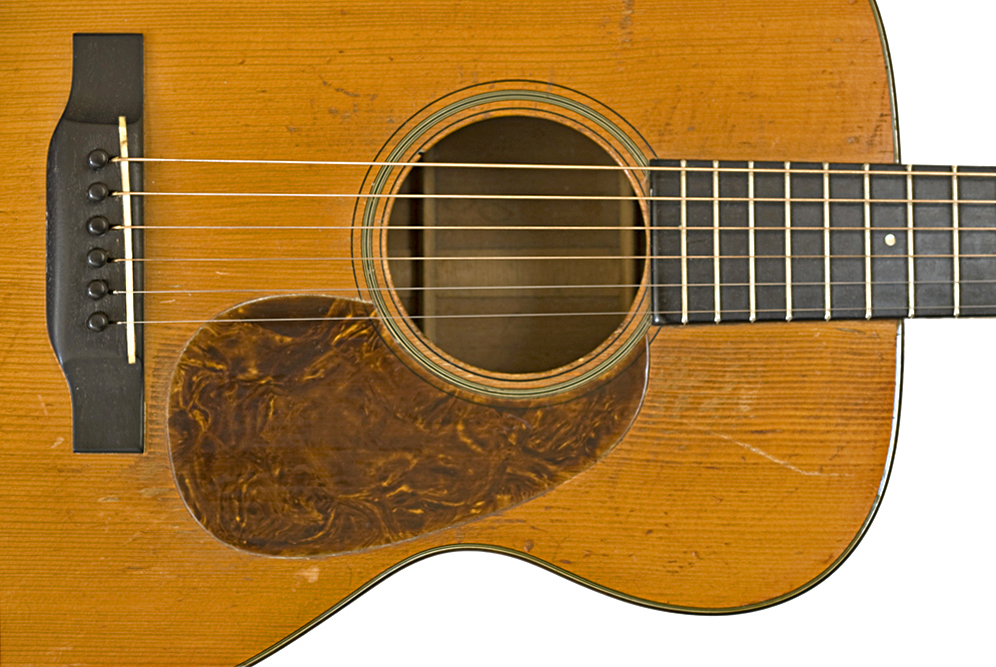
1939 Martin D-28

1940 Martin 00-18

Red Spruce can often be distinguished from Sitka Spruce on Martin guitars by the appearance of sapwood, which could be placed at either side, but was generally placed by Martin at the middle of the top, forming a light colored band. Sapwood appears on Engelmann and German Spruce as well, but never on Sitka.
Sapwood is seen most often on Martins from the 1940's, when more larger guitars were built. These spruce trees are quite small, as opposed to the relatively giant Sitka trees, so it became difficult to find enough wide enough logs to accommodate 000 and Dreadnaught guitars without using the sapwood, especially as the supplies of appropriate red spruce dwindled.
1943 Martin 000-18
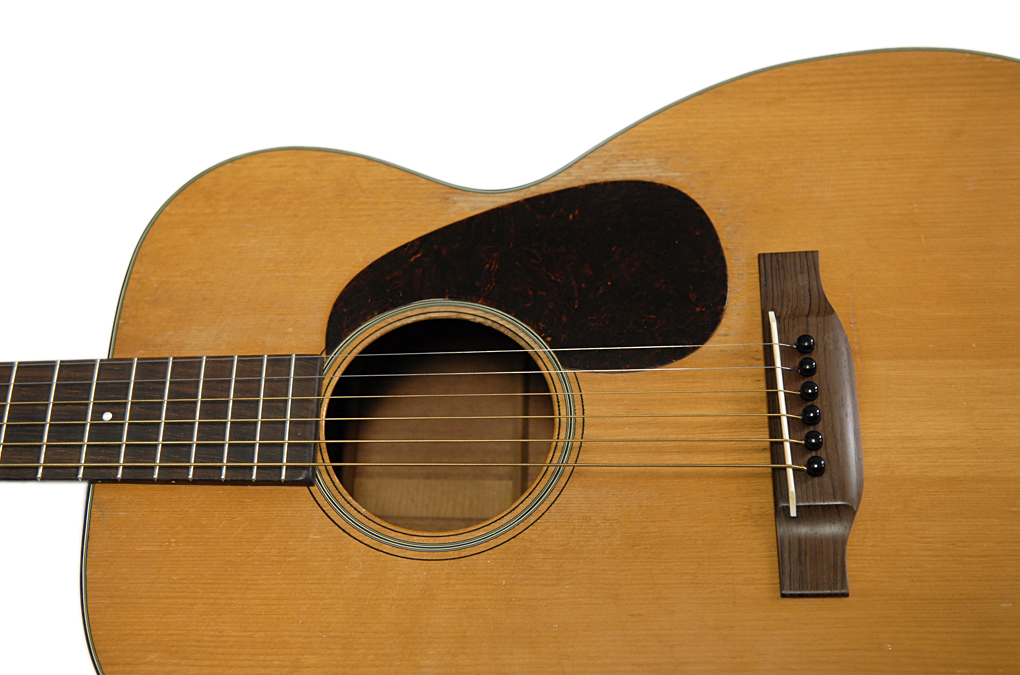
1944 Martin D-18
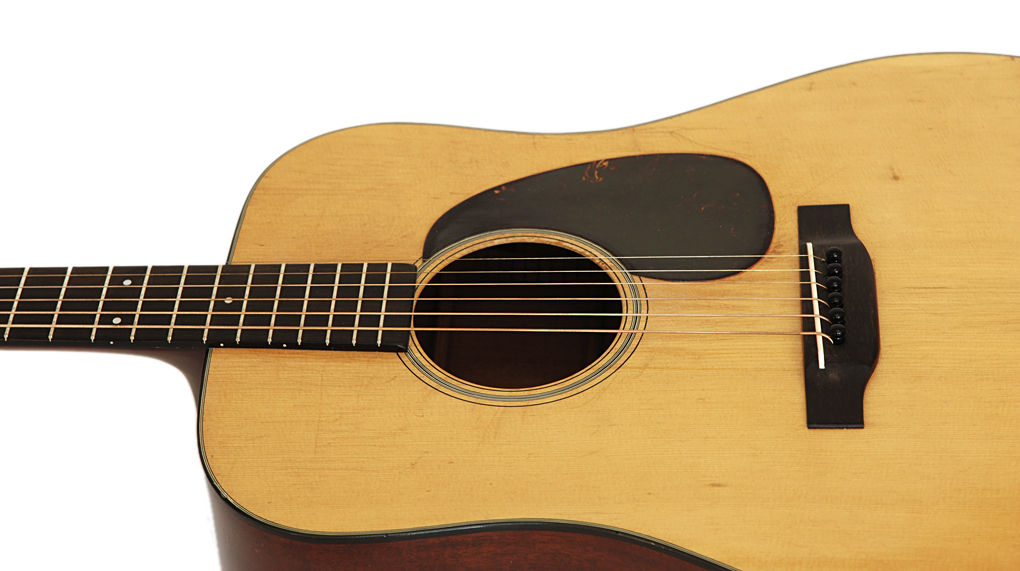
1945 Martin 000-18
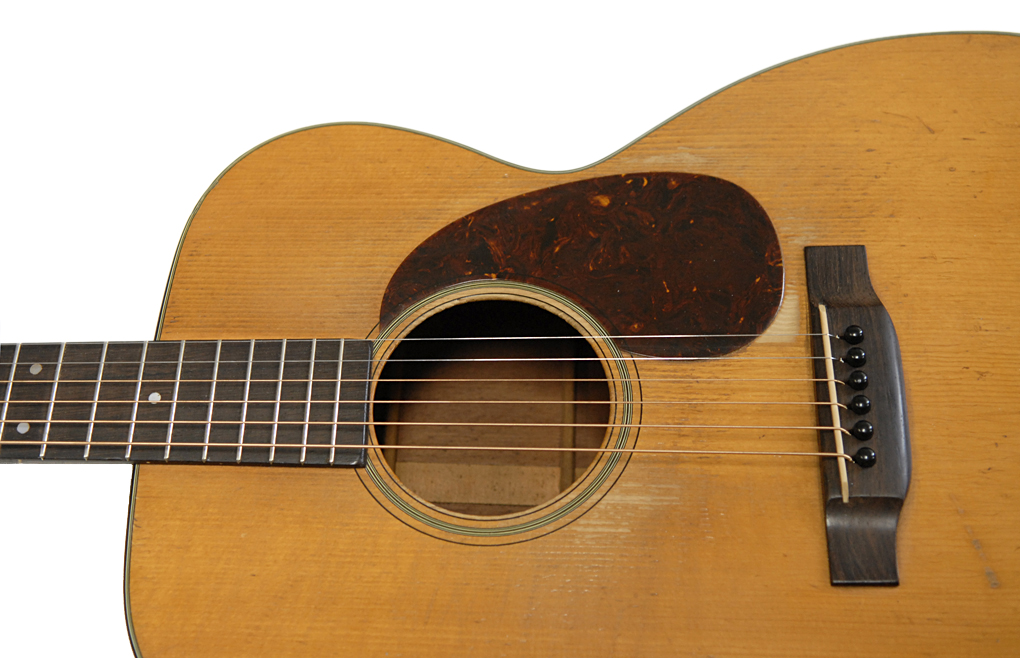
In 1946, as supplies of their preferred sources of spruce dried up, and Martin had used the last smaller pieces to creat four piece tops, Martin began using Sitka spruce from the Northwest.
The Sitka used in this first year of 1946 has a distinctive dark brownish tone, and tends to have the distinctive light swirls in the wood known as "bear claw". This figure is considered to be desirable as it can make the board stiffer as well as for it's appearance.
1946 Martin 000-18
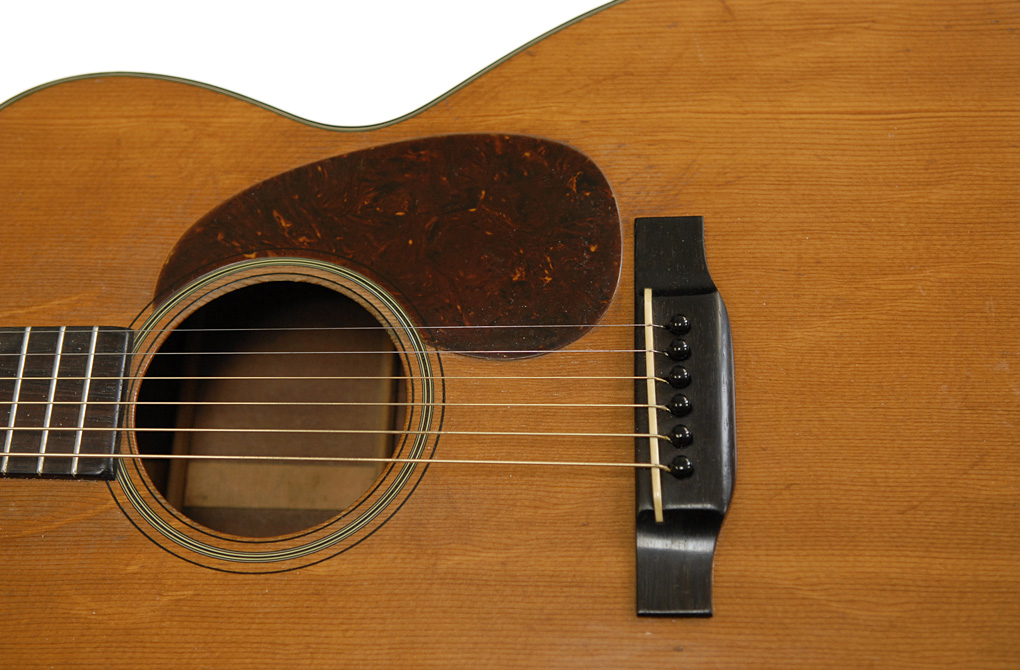
1951 Martin D-28
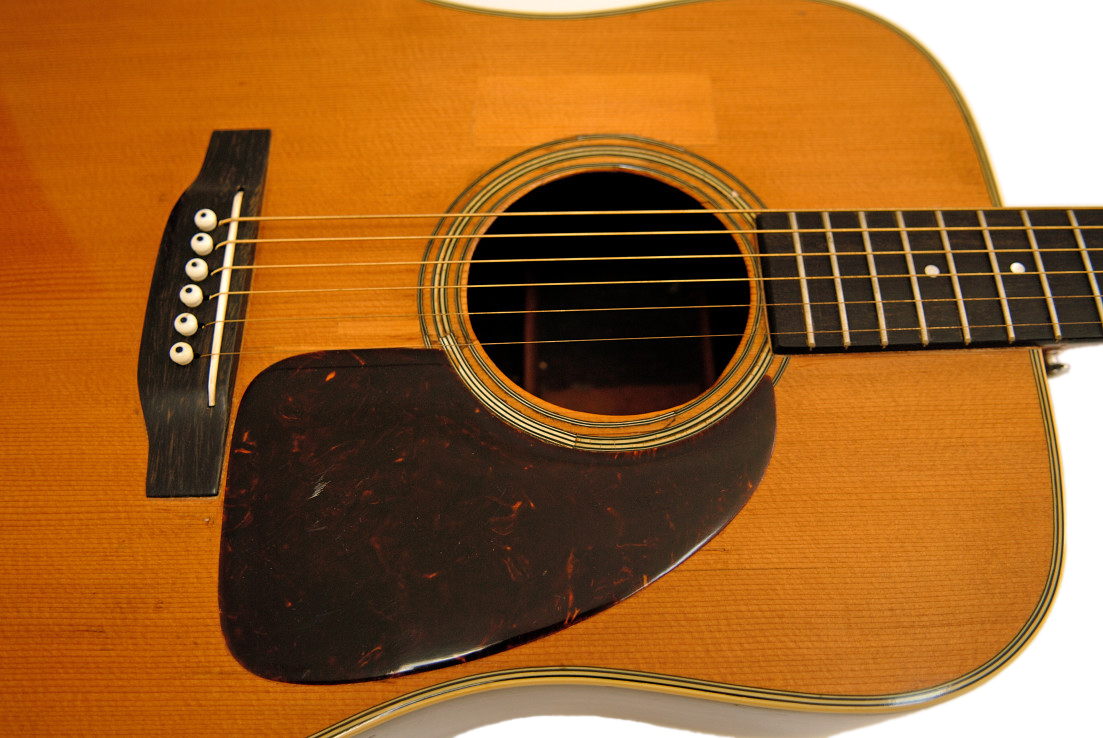
1952 Martin 000-18
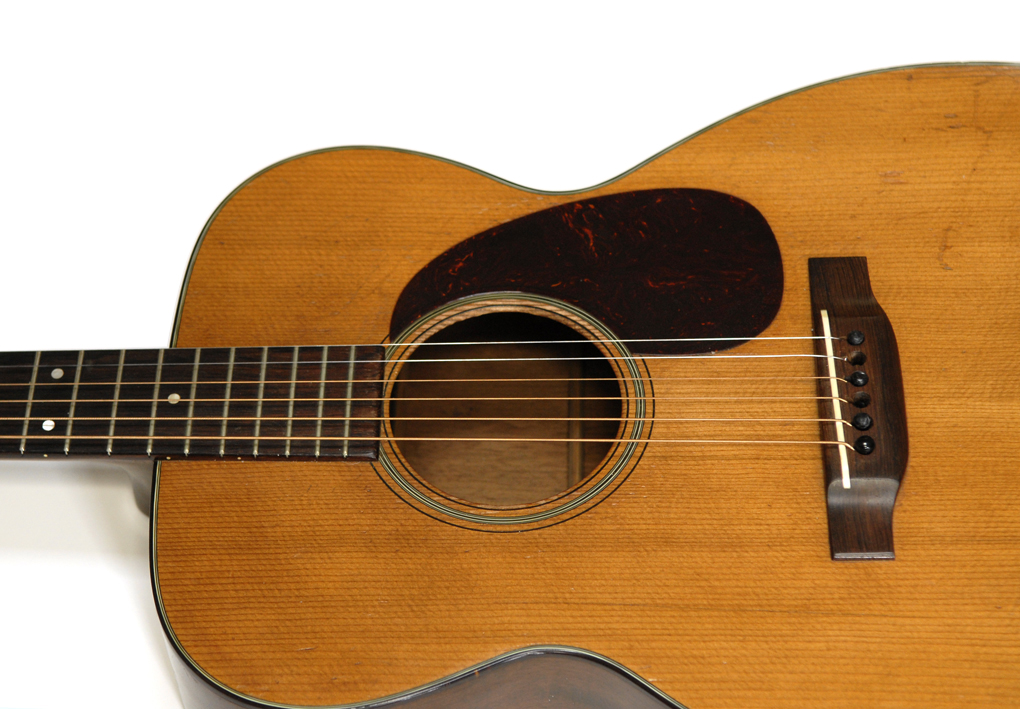
In 1953 Martin used a batch of Engelmann Spruce which was acquired as government surplus wood. It's possible that Martin also acquired a small supply of red spruce which was also used in 1953. Martin did acquire a supply of red spruce which appears on Martin guitars built in 1957.
1953 Martin 0-18
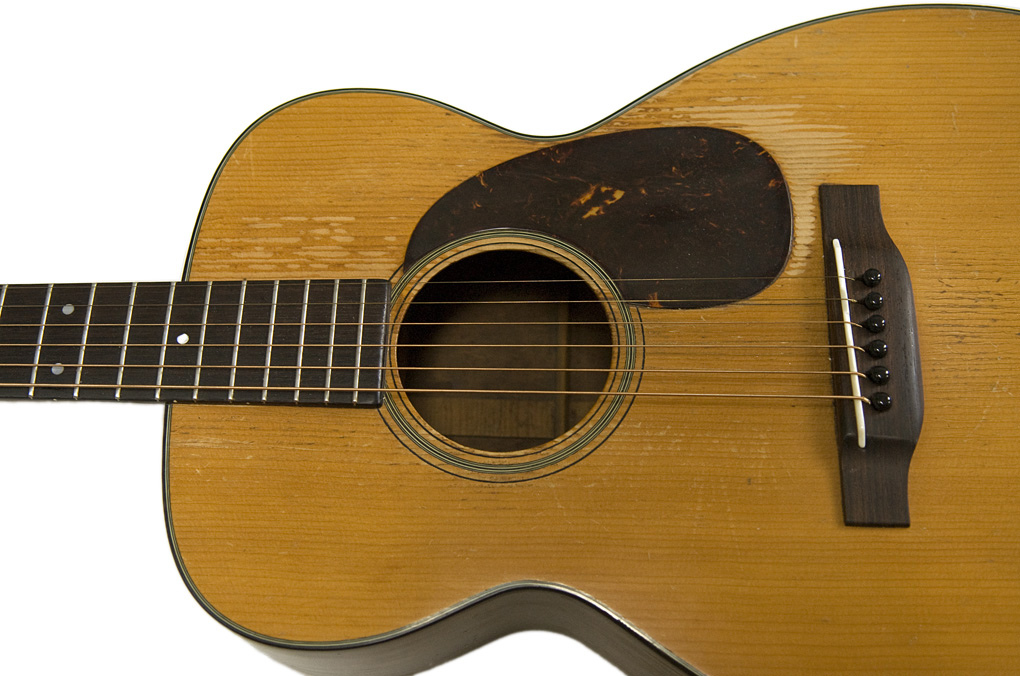
1957 Martin 00-18
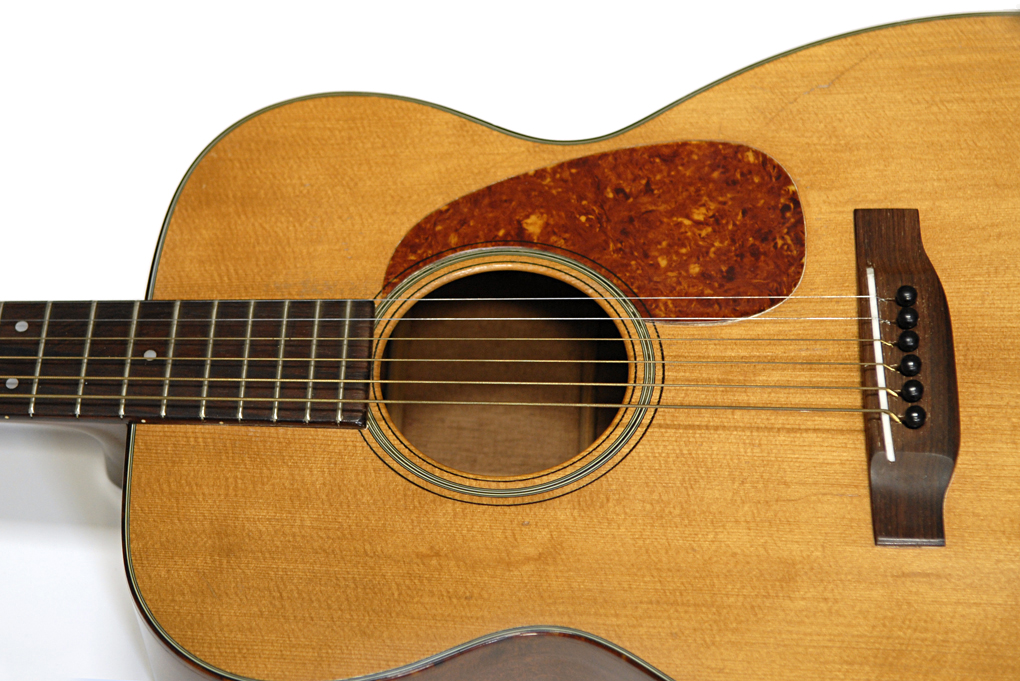
1962 Martin 000-18
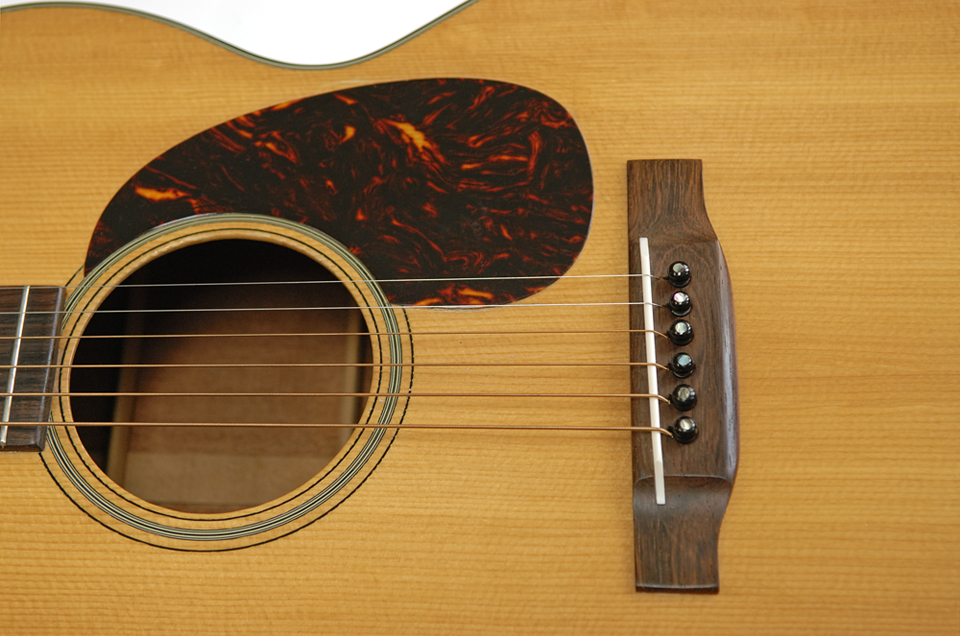
1964 Martin 0-18
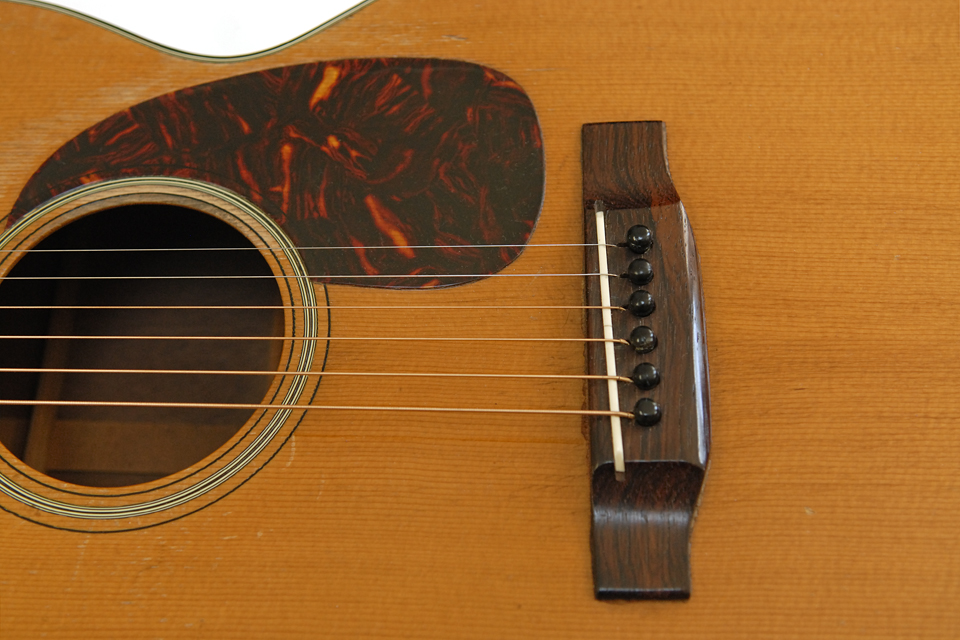
1965 Martin D-35
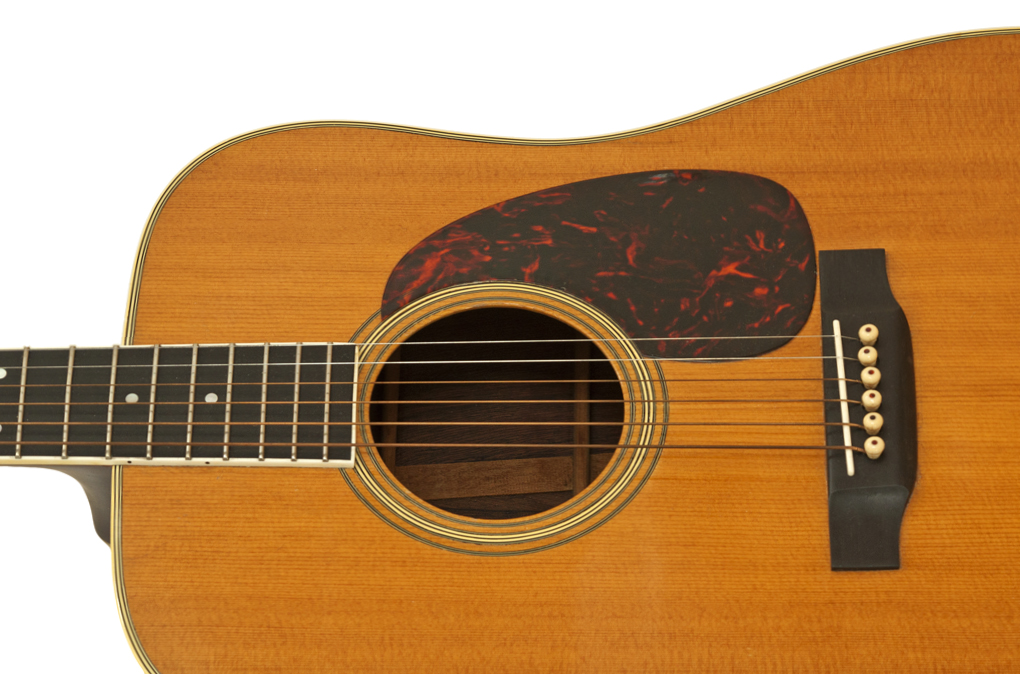
1966 Martin D-35
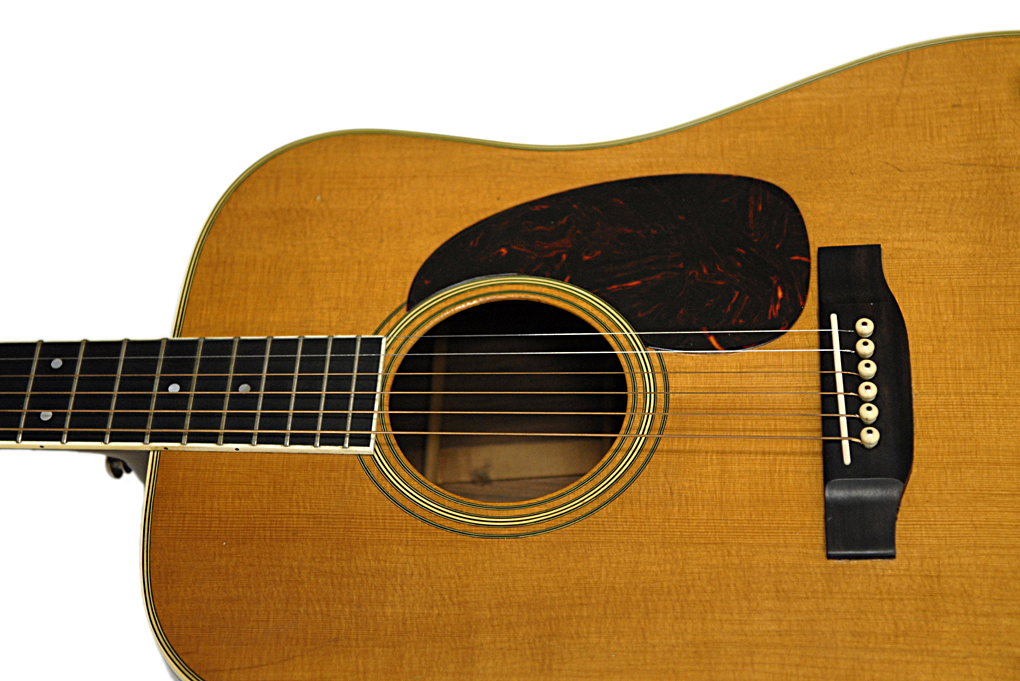
In 1922 Martin introduced the 2-17 with a mahogany top as well as back and sides. The Style 17 line was soon expanded to include single 0 and 00 guitars.
1936 Martin 0-17
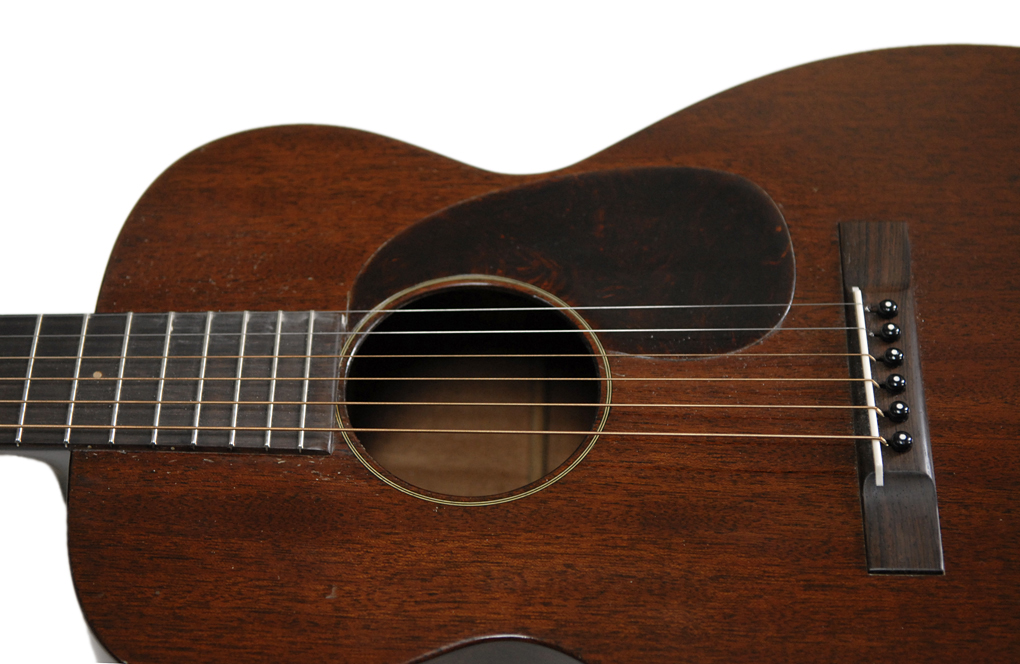
An all mahogany Style 15 was added to the Martin line in 1940.
A variety of woods were used for the backs and sides of early Martin guitars.
Martin Stauffer Style guitar with maple backs and sides.

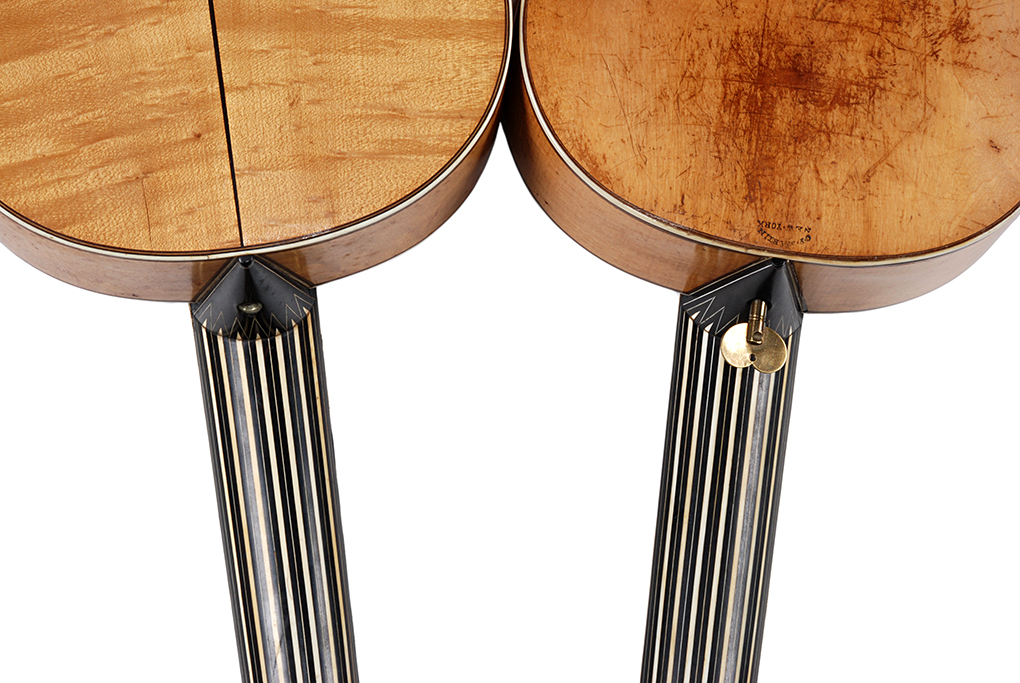
This Martin guitar has been described in several books as an unusual early example made with koa back and sides.
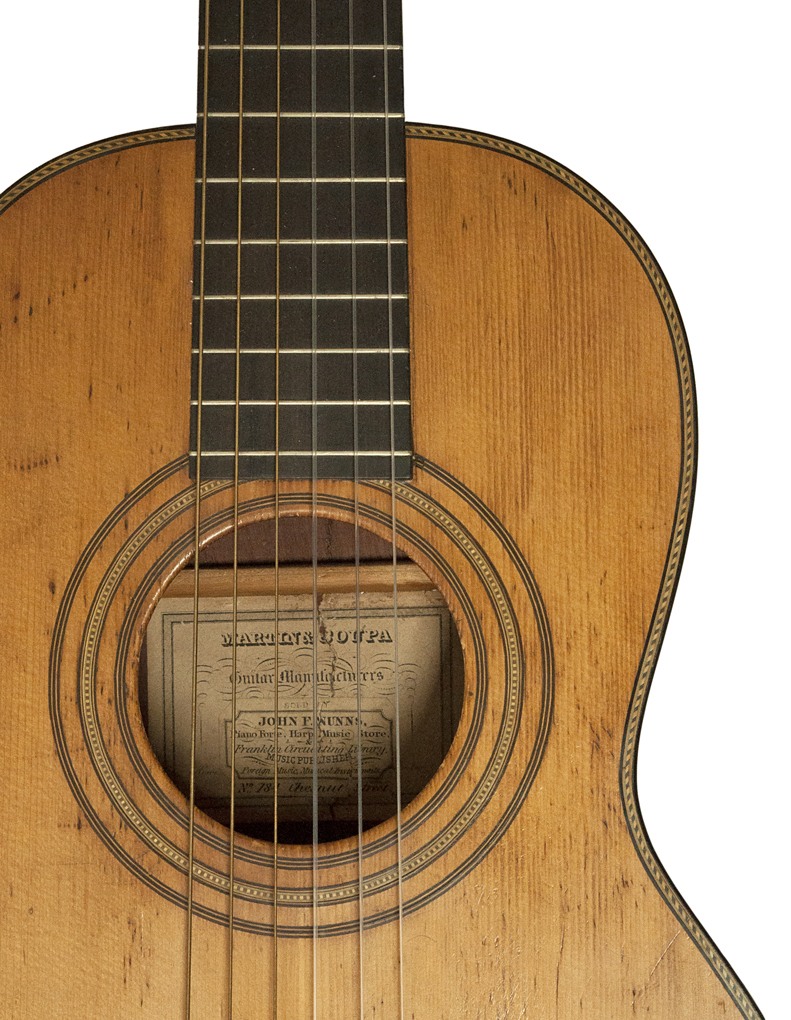
Recent testing has shown this wood to in fact be Goncalo Alves from Eastern Brazil, commonly referred to as "Tigerwood".
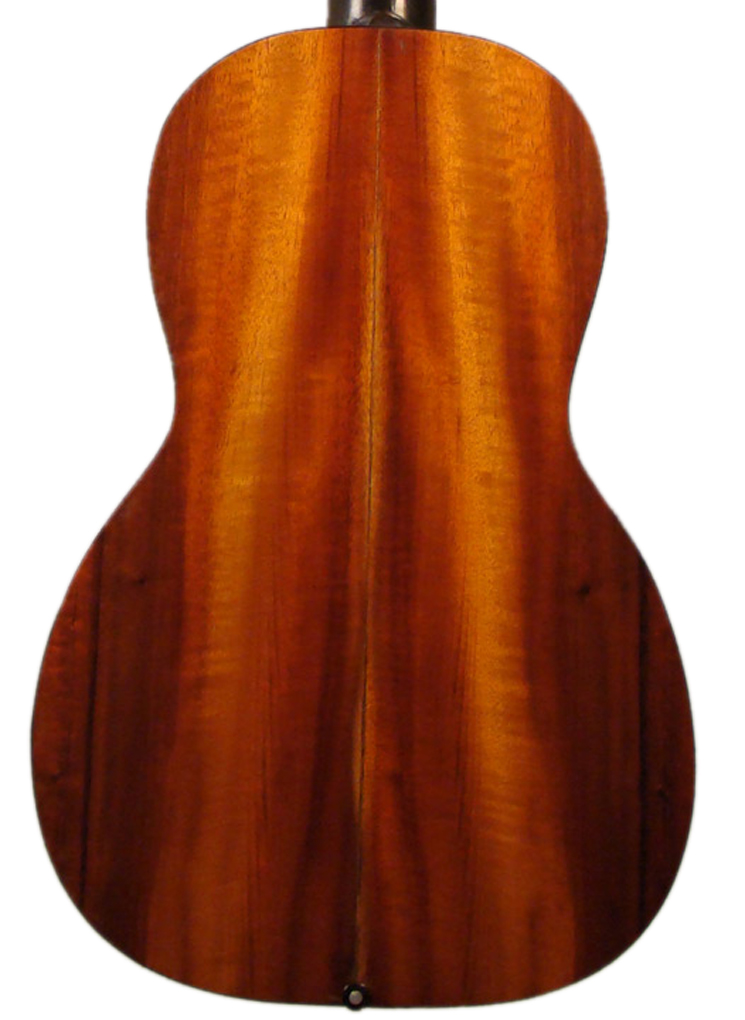
The back of this guitar is made with two pieces of koa, joined without either interior or exterior center strip.
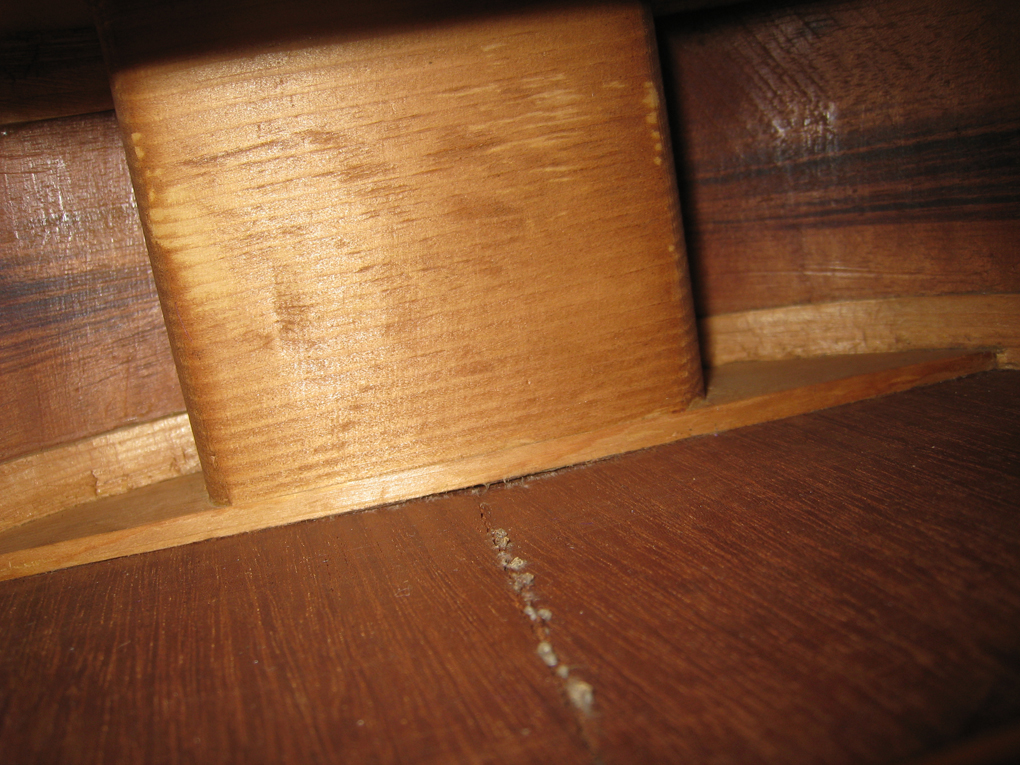
Guitar Backs of Rosewood Veneer Over Spruce or Mahogany
By the 1840's, most all Martins were made with rosewood backs and sides.
Some of C.F. Martin's earliest guitars were built with rosewood veneer over spruce backs.
This "Hudson Street" Martin Guitar, from 1837,

has a spruce back on a slight diagonal.
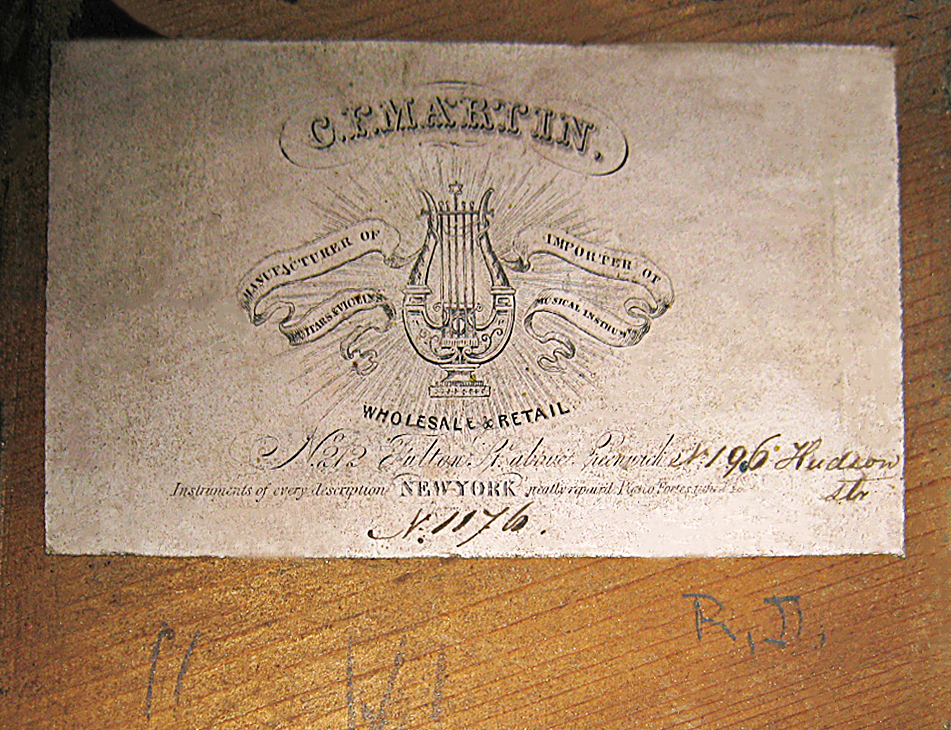

You can see why I think of this as a decorative rosewood veneer, rather than a laminate. C.F. Martin was a cabinet maker by trade, and the finest furniture was often made with beautiful rosewood veneers. If spruce provided the best tonewood for a top, why not for a back as well? Martin was always leery of using anything but the more stable quarter sawn rosewood. Veneers allowed Martin to use the more attractive but less stable slab sawn rosewood on their finest guitars.
The two sides of this guitar are made from one continuous strip of rosewood.
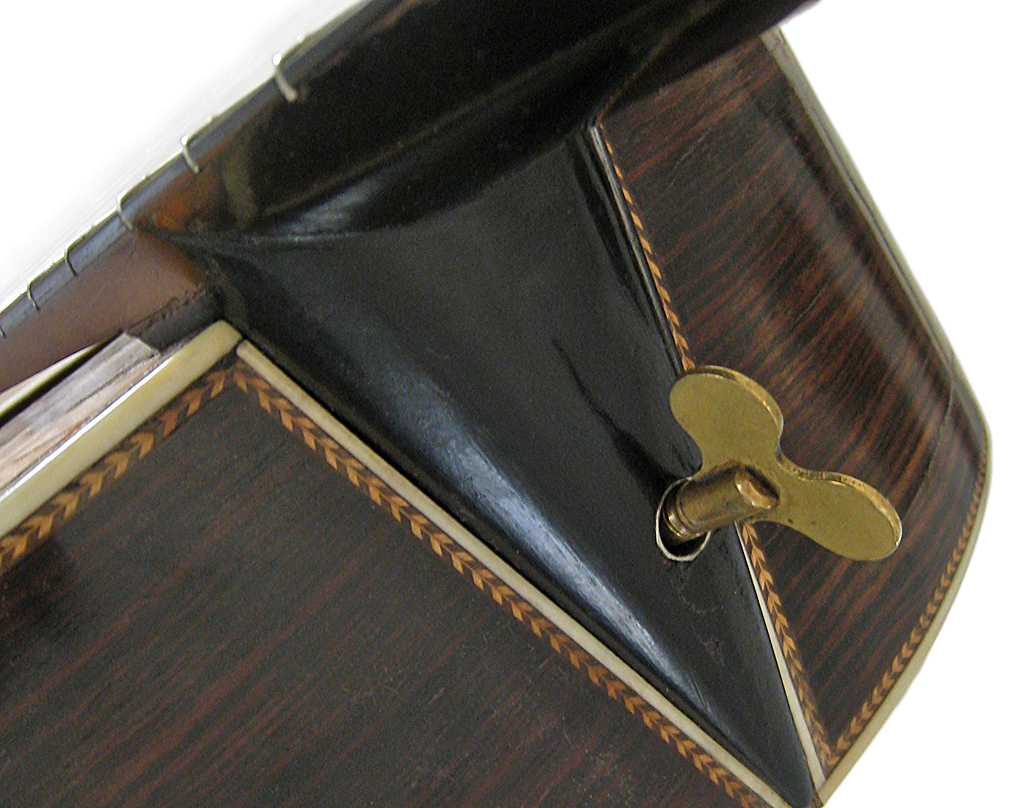
The rosewood veneers never predominated in any period. We tend to be starstruck by the most beautiful decorative Martins, but if we pay attention to more of the plainer examples, we often get a more complete picture.
I have four examples of Martins with rosewood veneers over mahogany backs, all finer examples from the 1840's. Most are on higher grade Martin & Coupa guitars. One is on a high grade "Spanish" Martin from the same period, with the mahogany/rosewood back.
1840's Martin Presentation Guitar

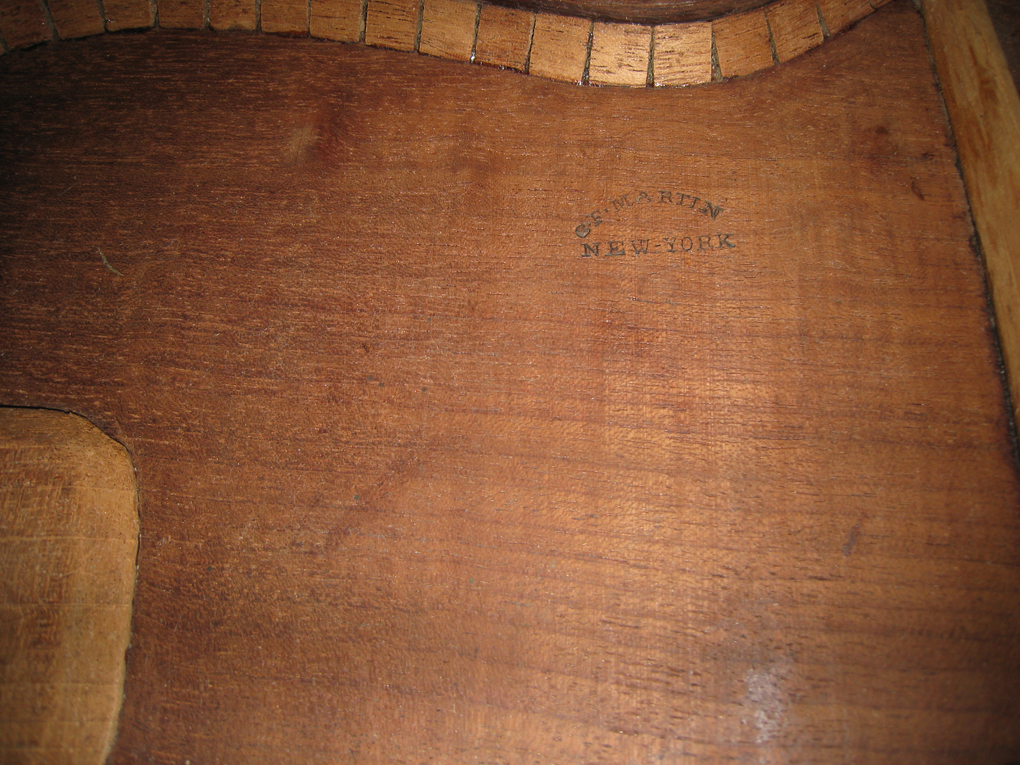
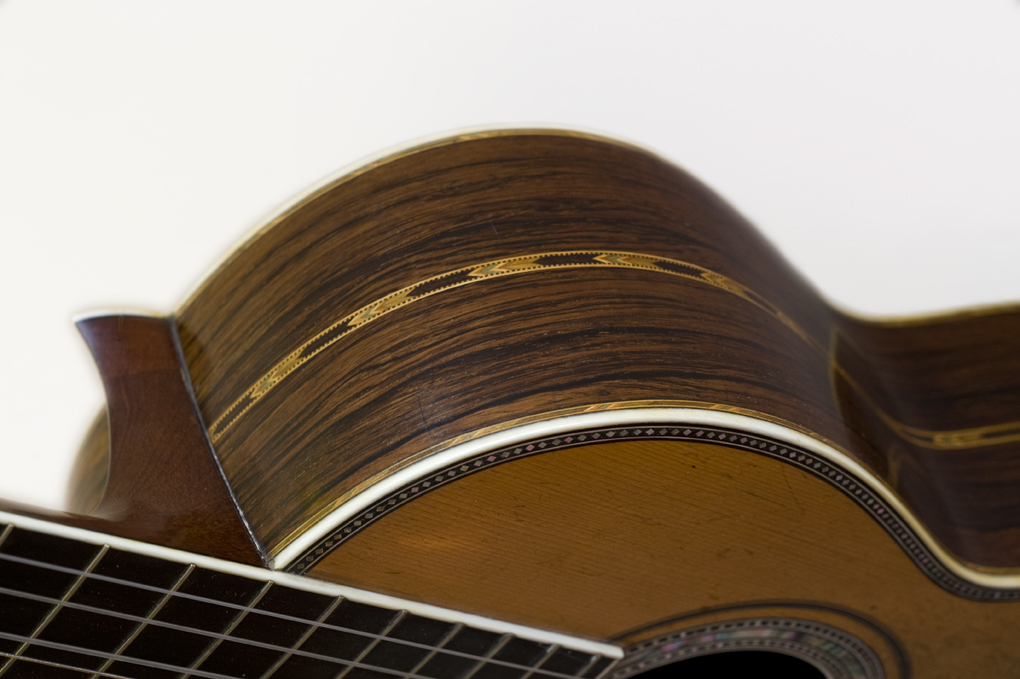
My wonderful Renaissance Martin, a sister to this Spanish example, with many of the same features, does not have the rosewood veneer back. While being one of the most beautiful Martins ever made, it is a lower grade instrument, with herringbone borders rather than pearl.
In the "Post-Martin & Coupa" period, the spruce/rosewood examples appear again, but once again, only on certain models.
It appears again that Martin was using the rosewood veneer to allow him to build more attractive guitars with a more decorative grade of rosewood.
Martin built with spruce backs under rosewood veneers on their "presentation" grade guitars, such as the ivory fingerboard example:
1850's Martin Ivory Fingerboard Presentation Guitar

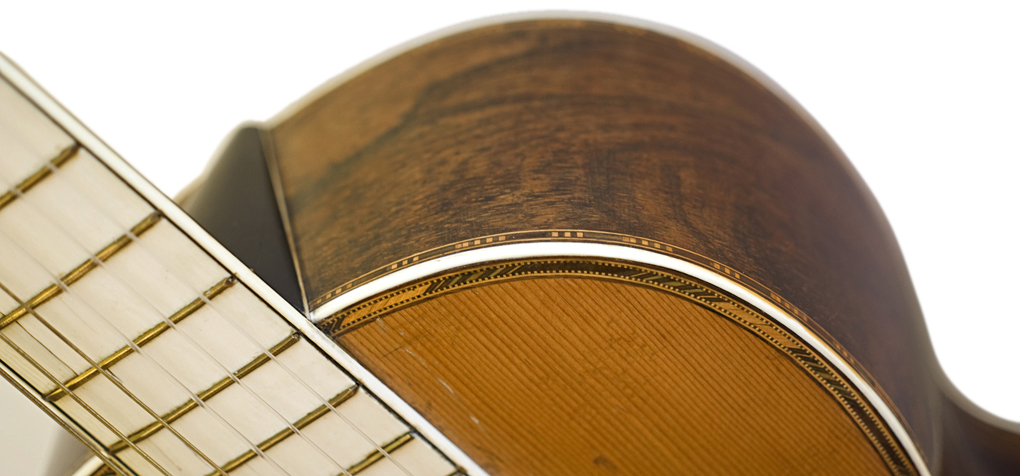
Martin used rosewood veneers on the early Style 27:
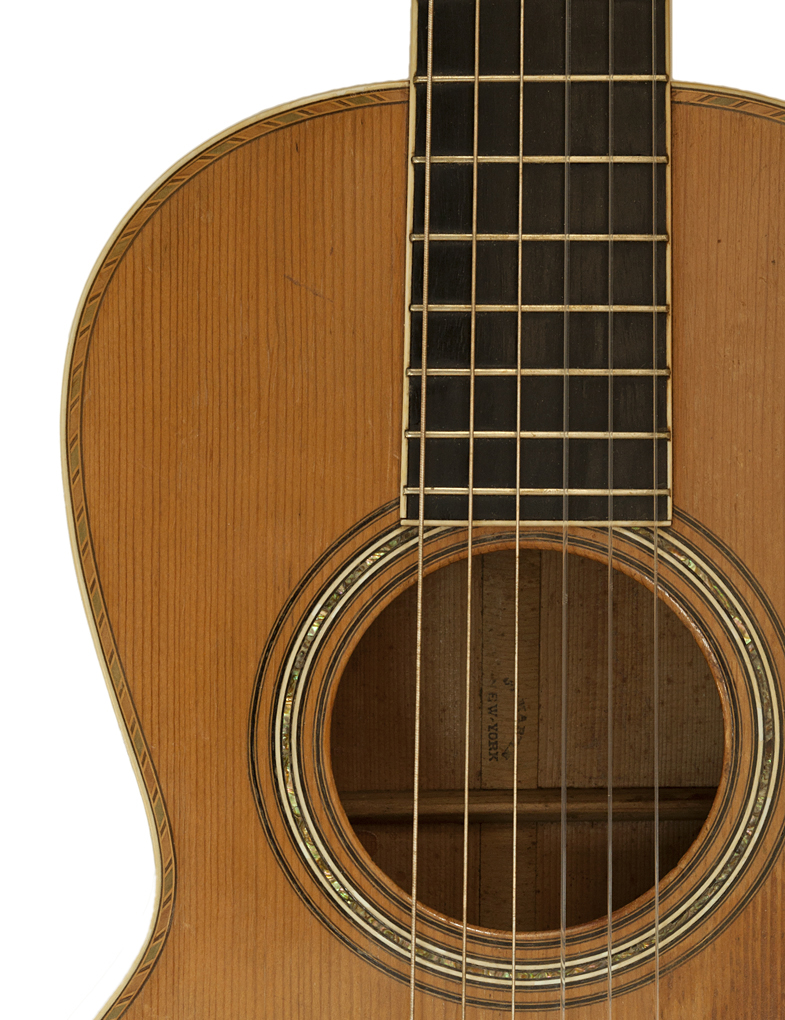
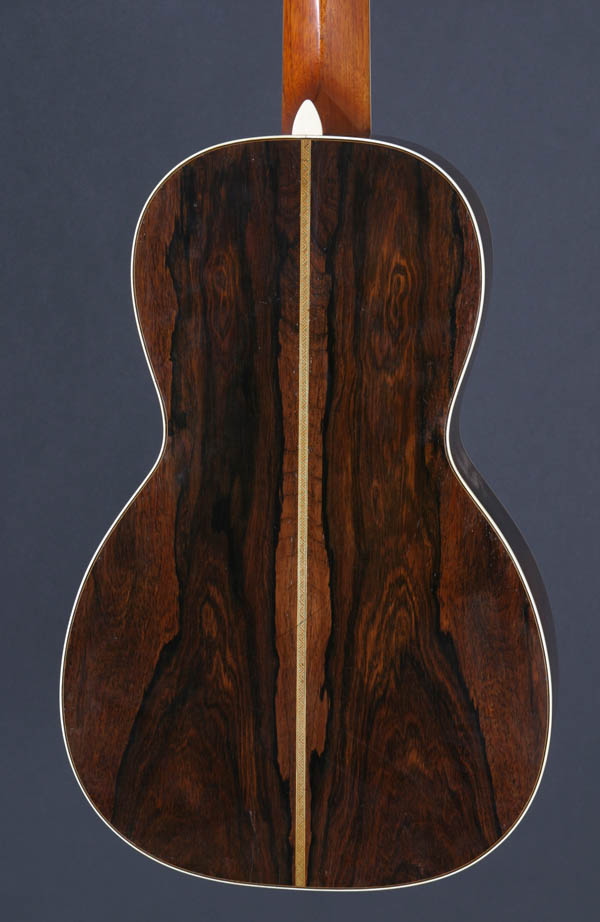
On the more decorative Civil War era variants of the Style 30:
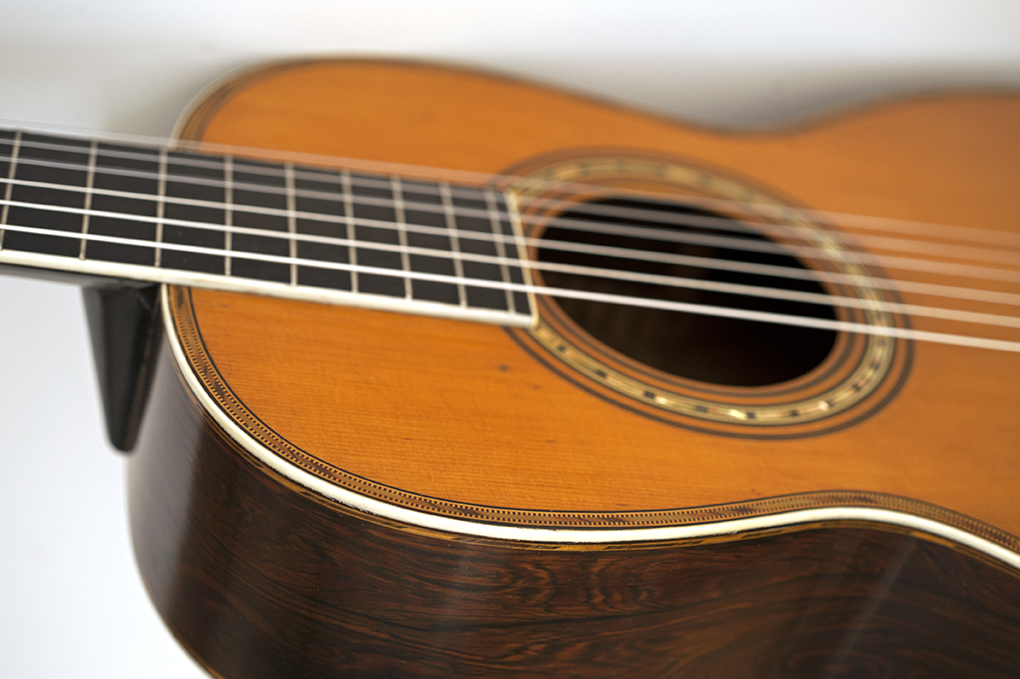
And on the Style 24, a model known for holding over old world elements:

You will not see the spruce backs on Style 28 or other "lower grade" guitars from the period, which tended to use the more standard quarter sawn rosewood.
Koa Wood Guitars
In July of 1916, with Hawaiian music all the rage, the C. F. Martin Co. shipped six samples each, of Hawaiian koa wood guitars with appointments generally similar to Martin's styles 0-18, 0-21, and 00-28, to the Southern California Music Company of Los Angeles, a chain of SouthernCalifornia music stores, and one of Martin's largest accounts. SoCal provided Martin with the koa wood from Hawaii, and asked that the trim on these guitars, designed for playing in the Hawaiian style, be as close as possible to those of SoCal's popular ukuleles. These early samples had koa wood back and sides and tinted spruce tops, but after seeing the samples, SoCal decided to offer all koa guitars, and to market the three models as the 1350, 1400, and 1500.
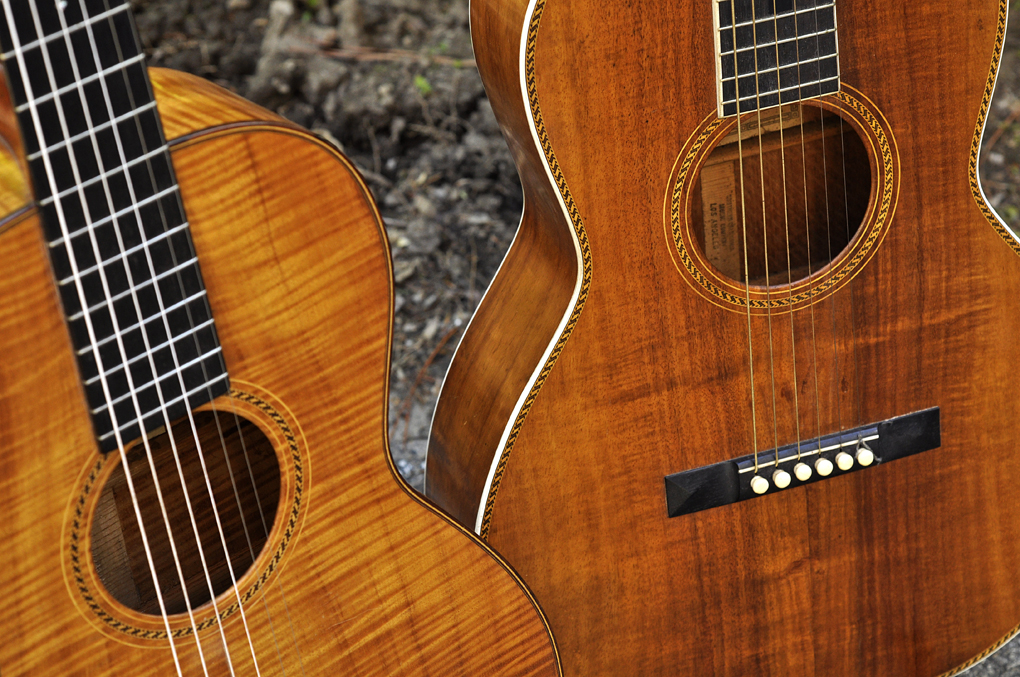
The koa on the SoCal Martins varied tremendously, some highly flamed and some rather plain.
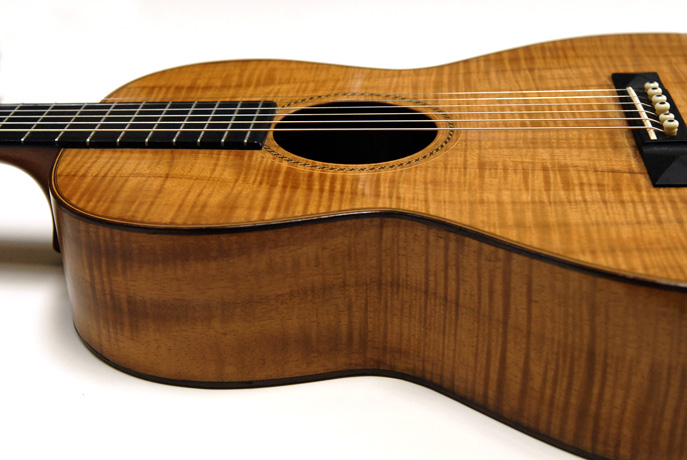
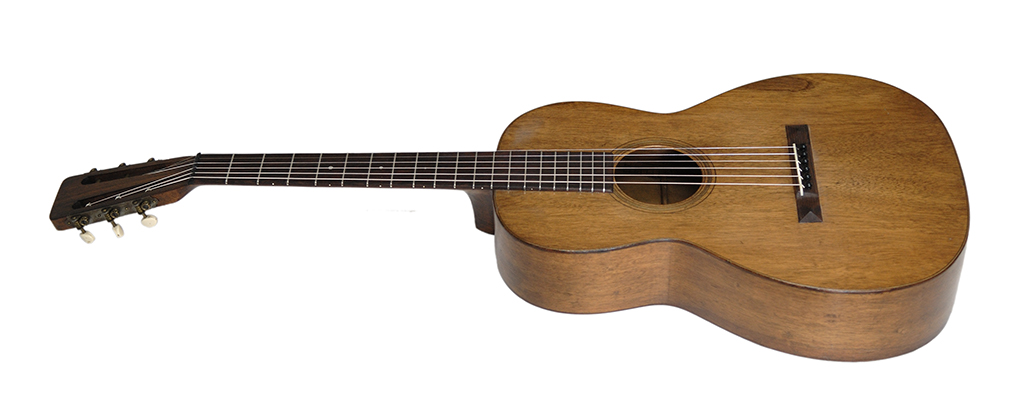
The fancier koa was sometimes but not always used on the higher grade models, however. The guitar on the right in the photo of two examples above is the higher grade Model 1500.
Three Piece Rosewood Backs
In 1965 when the supply of Brazilian rosewood large enough for Dreadnaught size backs was dwindling, Martin began to produce the D-35 with a three piece back which used smaller pieces of rosewood which had been cut for sides.
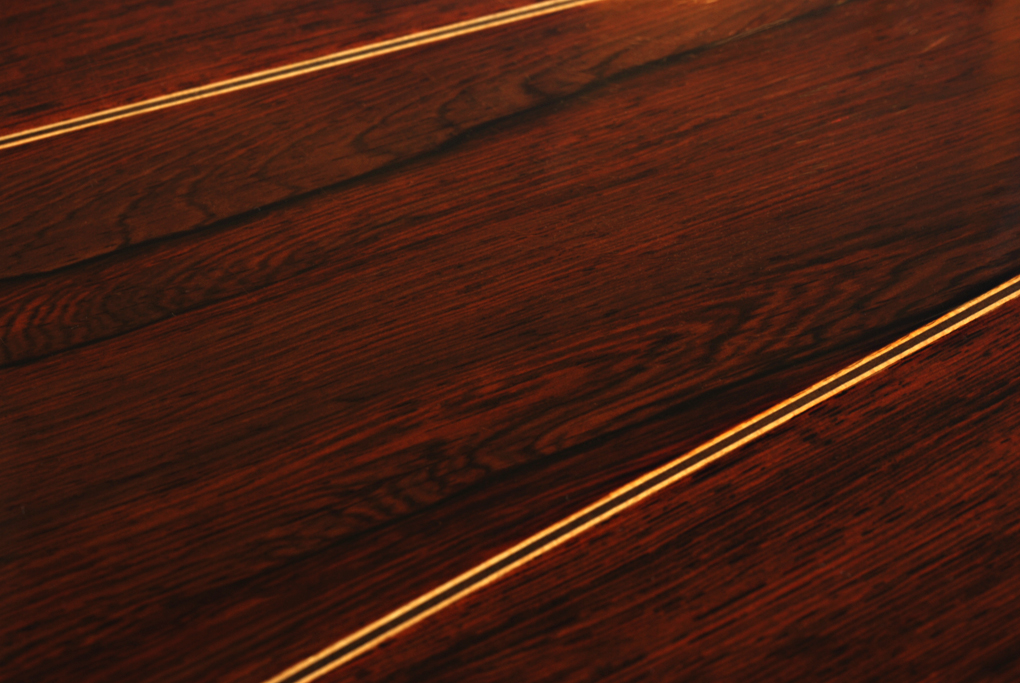
vintagemartin.com
To See Robert Corwin's Classic Photography of Folk and Roots Musicians, visit:
For Information on Photography for
Exhibition, Publication, CD's, Promotion, Web Pages, Tour Books,
to Purchase Photographic Prints, or
If You Have Questions or Suggestions About This Web Site or Vintage Martin Guitars:
e-mail: Robert Corwinentire site copyright ©1998 through 2011 Robert Corwin/Photo-Arts. All rights reserved.